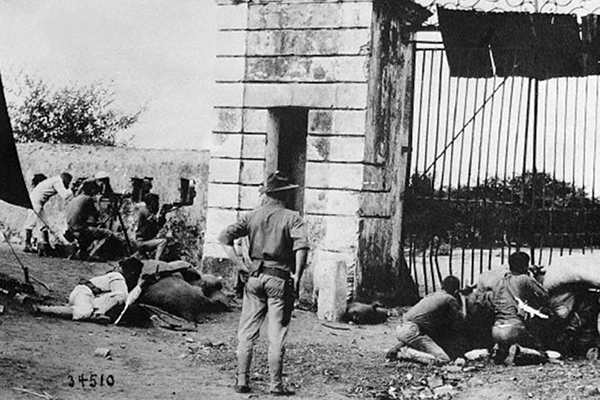WHY HAITI
The Challenge
The Challenge
The lack of coordinated, sustainable, safe water and sanitation is one of the greatest challenges the country of Haiti faces today. In a nation of approximately 11.5 million people, it is estimated that only about 58% of the population of Haiti has access to “improved” drinking water. That means about 4.6 million people drink water from mostly contaminated sources, such as rivers or lakes. In addition, only about 28% of the population has access to improved sanitation facilities. The resulting impact on individual and community health is profound. Contaminated water and poor sanitation are linked to the transmission of diseases such as cholera, diarrhea, dysentery, hepatitis A, and typhoid. Absent, inadequate, or inappropriately managed water and sanitation services expose individuals to these preventable health risks. Although exacting statistics on diarrhea diseases in Haiti are scarce, those water borne diseases are the third leading cause of child mortality worldwide and have a major impact on the death of adults 70 years and older.
For decades, the successful delivery of financially and operationally sustainable water, sanitation and hygiene (WASH) projects in Haiti has been an elusive target – one that has become even more challenging since the 2010 earthquake and onset of cholera. Breakdowns in the infrastructure, non-existent repair funding and qualified expertise, a proliferation of charity, and a lack of management are significant impediments to the development and progress of the WASH sector in Haiti.
A Step Toward a Solution
A Step Toward a Solution
The intention of HANWASH is to facilitate universal access to water and sanitation and the promotion of good hygiene by every household in Haiti using a holistic approach involving a broad network of diverse and capable partners. Starting with seven pilot communes this is a multi-decade, multi-billion dollar endeavor, HANWASH plans to ensure availability and sustainable management of water and sanitation for all by relying on the long-term commitment and participation of local communities.
This solution involves not just constructing new delivery methods and good hygiene, but establishing a framework of accountability, responsibility and transparency. Such an approach will enhance partnerships and create clear lines of authority and responsibility that will result in technically sound, revenue positive, safely managed infrastructure.
Based on initial learnings from pilot projects, a strategic business plan has been developed outlining three overall strategies for success and a roadmap for addressing the challenges:
- Promote HANWASH values and mission to increase public interest.
- Deliver successful projects based on the HANWASH model of collective action in seven communes (municipalities).
- Strengthen the capacity of stakeholders to develop, regulate and coordinate the sector.
How did Haiti get to where it is today?
It started in 1804, 220 plus years ago. The world’s first example of a formally enslaved black people overthrowing the colonial power. It declared itself a free republic, the first free black republic. And that movement inspired slave rebellions around the world. But it also put fear into the hearts of leaders whose countries depended on those slaves for economic imperialism and power.
Since then, the story of Haiti has been one of foreign interventions, one after the other which interfered with Haiti’s politics than influenced it for the better.
One hundred twenty-five million francs in reparations imposed by France in 1825 as a fine on Haiti for overthrowing the colonial power. It took Haiti 122 years to pay off the debt.
The US military occupation in 1919 – 1935 which effectively destroyed the country’s coffee industry, and the rice and trade policies of the Clinton administration which left the Haitian rice industry in tatters.
And more recently the US Parole Program which is bleeding the country dry of its smartest and most motivated people.


“In 2004, Haiti Outreach visited communities to survey wells and boreholes, and found that approximately
50% of them were non-functional.
50% of them were non-functional.

